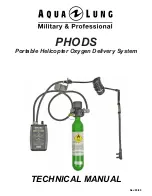
multi N/C pharma HT
Function and design
29
The sample is filtered outside of the analyzer and then analyzed as a TOC sample.
3.4.6
TN
b
analysis
TN
b
: Total Nitrogen bound
The content of nitrogen compounds in aqueous samples can be determined in the ana-
lyzer. In environmental samples, these can be ammonia salts, nitrites and nitrates, and
in pharmaceutical samples, amino acids and proteins.
The thermocatalytic oxidation results in nitrogen oxides which can be detected using a
chemiluminescence detector (CLD) or an electrochemical detector (ChD).
3.5
Catalysts
As an oxygen carrier, the catalyst supports combustion of the samples. Solids that are
catalytically active in a temperature range of 700 to 950 °C can be used as catalysts.
The platinum catalyst can be used universally over the entire working range for carbon
and nitrogen determination. Its optimal function is at a reaction temperature of 800 °C.
Because of its very low individual blank value, it allows safe and precise analysis of low
carbon and nitrogen contents. The catalyst also works effectively during analysis of
highly contaminated waters.
To minimize wear, reducing the furnace temperature to temperatures below the melting
point of the salts is recommended with high salt matrices (e.g., seawater).
Alternatively, a CeO
2
catalyst can be used at a reaction temperature of 850 °C.
3.6
Calibration
3.6.1
Calibration strategies
Multiple point calibration with constant sample volume
In many applications, multiple point calibration with a constant dosage volume and mul-
tiple standard solutions at different concentrations is suitable.
The calibration range can encompass a wide range of concentrations and must be de-
fined in accordance with the expected sample concentrations. Multiple standard solu-
tions are measured with the selected method.
Multiple point calibration with constant concentration
Additionally, a multiple point calibration with variable dosage volumes and constant
concentration can be performed. This calibration strategy is particularly interesting and
the norm in the pharmaceutical industry for measurements at very low concentrations
(<1 mg/l).
Only create one standard solution for the calibration range. The analyzer then analyzes
different volumes of this standard solution. Do not go below the lowest standard solu-
tion volume of 2 ml when doing this.
Check the calibration via a second independently made standard solution to exclude er-
rors during standard solution creation.
















































